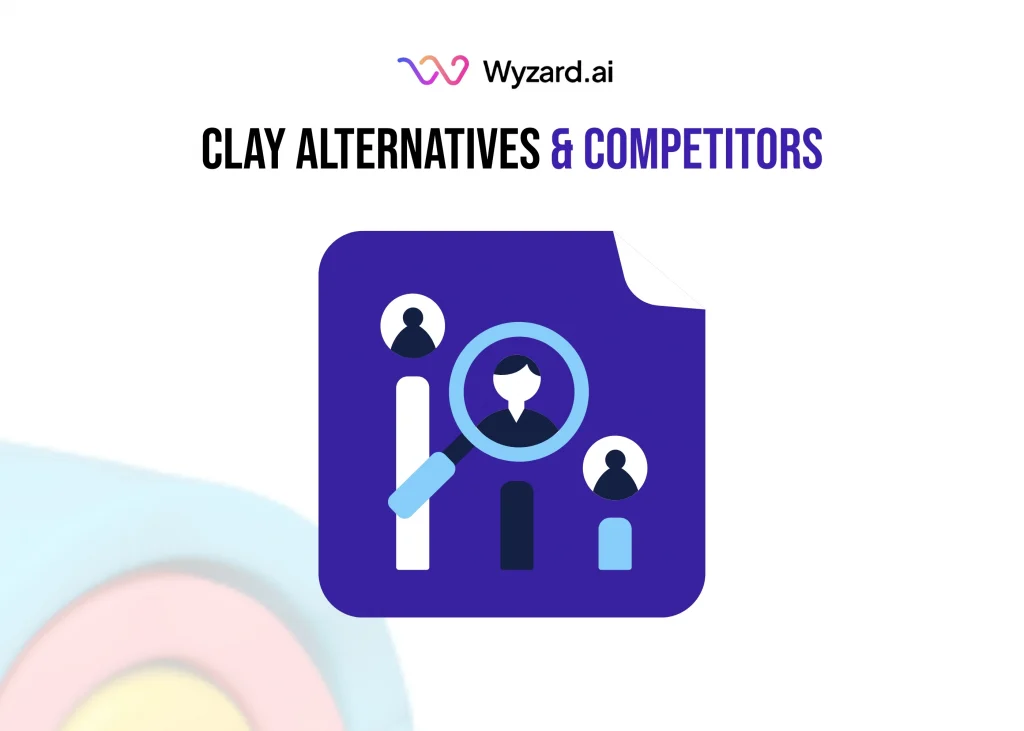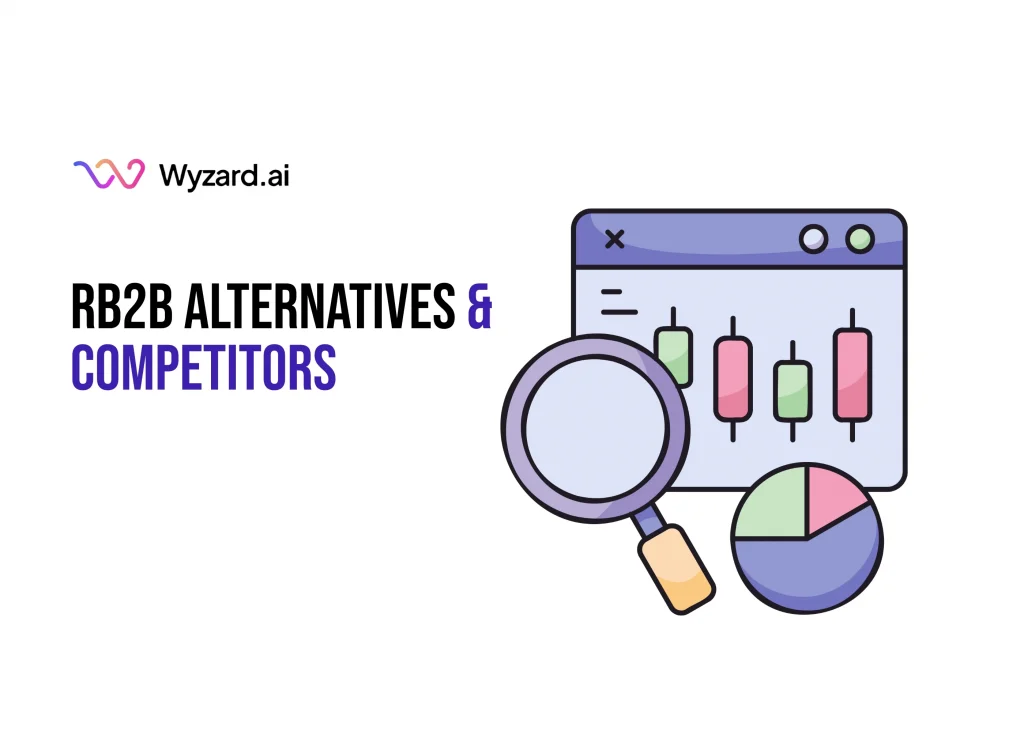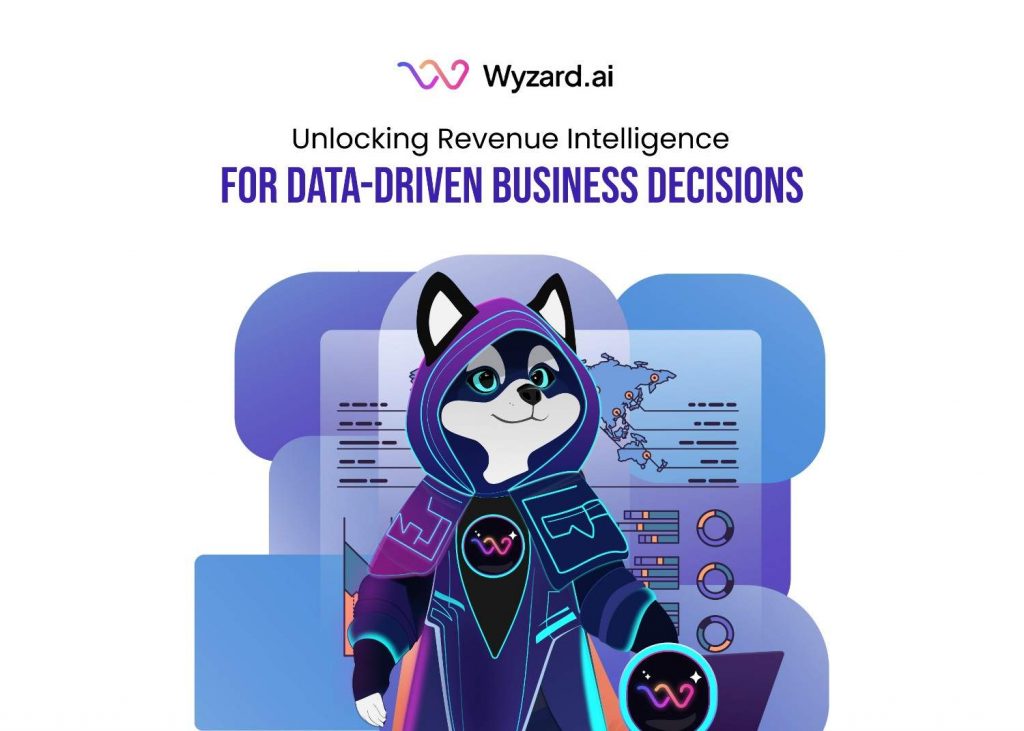For B2B SaaS marketing teams, the right sales intelligence platform can make the difference between hitting revenue targets and ...
Landing Page Conversion Rate Optimization: 8 Ways To Break Through
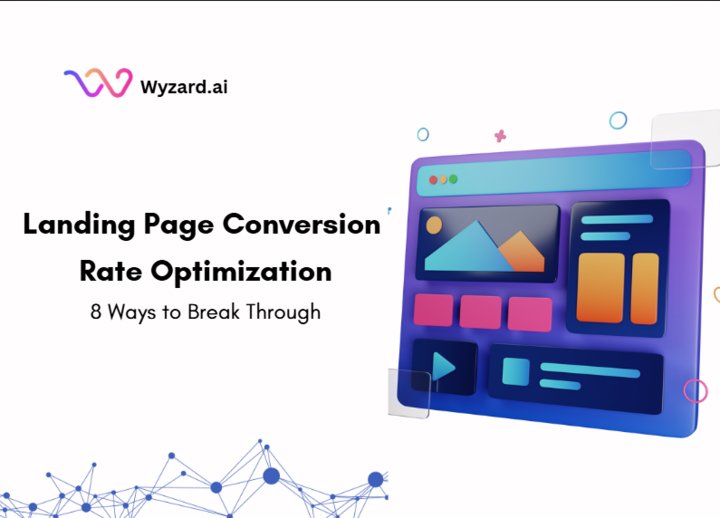

Subscribe Now
1. Optimize Landing Page Conversion Rate Optimization with a Clear, Single CTA
A fundamental principle in landing page conversion rate optimization is the implementation of a single, decisive call to action (CTA). When visitors encounter multiple options, they may become confused or sidetracked, lowering your landing page conversion rate. Instead, a streamlined approach with one clear CTA can dramatically improve conversion rates.
Key Considerations:
- Clarity Over Complexity: Clearly state a single action—for example, “Request a Demo” or “Sign Up for a Free Trial.” This leaves no room for doubt, ensuring visitors understand the intended next step.
- Action-Oriented Language: Use compelling terms that prompt immediate engagement. Landing pages with singular CTAs can see conversion improvements in some cases.
- Visual Emphasis: Design your CTA button so that it stands out on the page. The surrounding negative space, contrasting colors, and strategic placement all contribute to a higher landing page conversion rate.
For SaaS marketers aiming to improve landing page conversion rate, a straightforward CTA reduces friction and guides visitors smoothly through the conversion funnel. Companies like Wyzard.ai have built their reputation by ensuring that every visitor interaction is supported by clear, actionable messaging.
To see how an AI GTM orchestration platform can further streamline your inbound journey, you might wish to learn more by exploring the Marketing Copilot Manifesto.
2. Simplify Your Design for Improved Landing Page Conversion Rate
An uncluttered design directly influences how effectively your landing page conversion rate performs. Overly complex pages often lead to user fatigue and distract from your core message. Focusing on simplicity ensures that your high-priority messages and forms are easily accessible and understood by your target audience.
Essential Elements:
- Minimalism in Layout: Remove unnecessary elements that do not contribute to the primary objective. A clear hierarchy in design promotes readability and quick decision-making.
- Streamlined Forms: Ask only for essential information. Long, complicated forms can significantly reduce your conversion rates by increasing friction for the visitor.
- Consistent Branding: Maintain a consistent visual identity that aligns with your overall marketing strategy. This not only builds trust but reinforces confidence in your brand.
By embracing design simplicity, you are well on your way to creating some of the highest converting landing pages. Remember, when your page layout is clear and purpose-driven, every element works together to increase your overall landing page conversion rate.
3. Accelerate Your Strategy with Faster Page Load Speed to Boost Landing Page Conversion Rate
Page load speed is a critical technical factor that directly impacts your landing page conversion rate. Visitors expect near-instant responses, and any delay can result in lost opportunities.
Best Practices for Speed:
- Optimize Media Files: Compress large images and use modern formats like WebP to reduce file sizes without compromising quality.
- Implement Efficient Code: Use clean coding practices and minimize the use of heavy scripts. Efficient development practices ensure that the core content loads quickly.
Use a Reliable Hosting Service: A robust hosting architecture minimizes downtime and speeds up server response times.
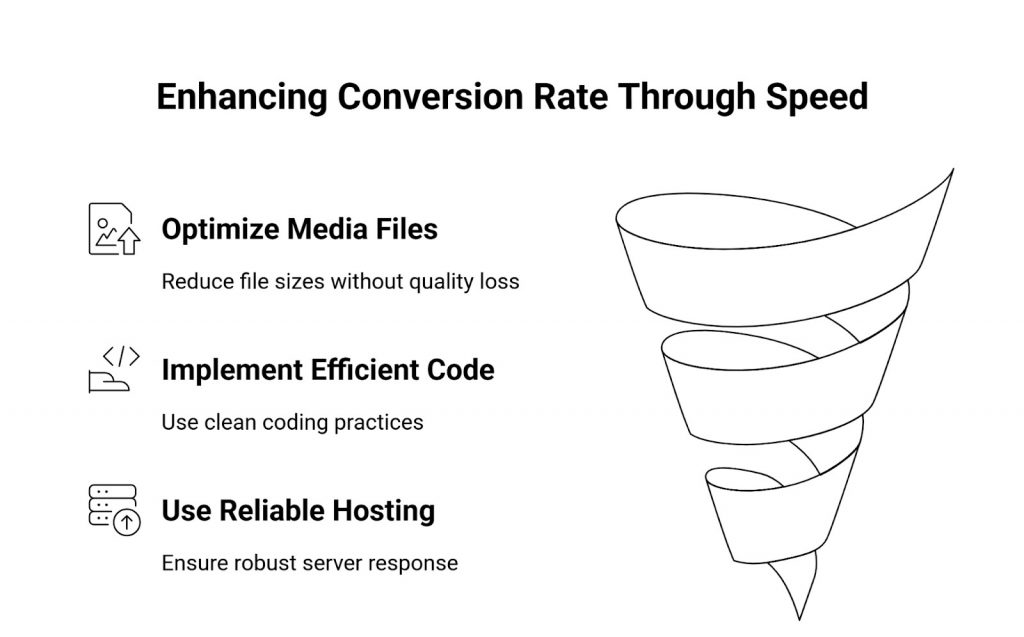
Incorporating faster page load speeds is a proven method to improve landing page conversion rate and offers an impressive return on investment for SaaS marketers. Efficient technical performance coupled with compelling content forms the backbone of successful landing page conversion rate optimization. If you’re aiming to align your technical infrastructure with your inbound goals, consider reaching out to Wyzard.ai for additional guidance and support.
4. Leverage Social Proof to Secure the Highest Converting Landing Pages
Social proof is one of the most persuasive elements you can incorporate into your landing page conversion rate optimization strategy. Testimonials, reviews, and trust badges provide evidence of your product’s value, easing the visitor’s decision-making process. When users see that others have had positive experiences, their confidence, and consequently, your conversion rate, tends to soar.
Effective Social Proof Strategies:
- Client Testimonials and Reviews: Highlight feedback from reputable clients. A concise, authentic testimonial can significantly boost trust.
- Case Studies: Provide detailed examples that illustrate how your solution has solved real business challenges.
- Trust Seals and Certifications: Include recognized trust indicators that reinforce your commitment to data security and quality service.
When you combine these elements in your landing page conversion rate optimization efforts, you build a compelling narrative that resonates with your audience. This becomes particularly effective in fostering the highest converting landing pages for companies focused on inbound marketing. As you design your page, consider exploring additional strategies shared in Wyzard.ai resources to ensure that visitors are confident enough to convert.
5. Embrace Mobile Optimization to Achieve a Better Landing Page Conversion Rate
In today’s digital world, optimizing your landing page for mobile devices is not optional—it’s a necessity. With a significant percentage of users accessing the web via smartphones and tablets, a responsive design is critical to ensure a seamless user experience. A mobile-friendly landing page plays a pivotal role in boosting your landing page conversion rate.
Mobile Optimization Tips:
- Responsive Design: Ensure that your landing page automatically adjusts to different screen sizes without compromising usability.
- Touch-Friendly Navigation: Design clickable elements (such as CTAs and links) to be accessible on smaller screens.
- Avoid Content Overload: Streamline information to ensure that mobile users can quickly grasp your message and take action.
By focusing on mobile optimization, you can improve your mobile landing page conversion rate dramatically. This strategy has proven effective for many B2B SaaS companies striving to convert website traffic into valuable leads. Well-designed mobile experiences are among the highest converting landing pages because they guarantee that potential customers are engaged regardless of their device. For more insights into mobile best practices, consider valuable tips from authoritative sources like Google’s guidelines on mobile usability.
6. Utilize Data-Driven Decisions for Effective Landing Page Conversion Rate Optimization
Harnessing the power of data is critical for ongoing improvements in landing page conversion rate optimization. Collecting and analyzing user behavior data allows you to identify problem areas and test variations that can lead to higher conversions.
Strategies for Data-Driven Optimization:
- Implement Analytics Tools: Use platforms like Google Analytics to track visitor behavior. Heat maps and session recordings reveal how users interact with your page, pinpointing areas that might require adjustments.
- User Segmentation: Break down your traffic to understand the behavior of different visitor groups. This segmentation helps tailor specific elements of your landing page to better serve each segment.
- Regular Audits: Periodically review your landing page performance data to identify emerging trends or sudden drops in your landing page conversion rate.
- Iterative Improvements: Adopt a continuous improvement mindset by running regular A/B tests to refine your content and design elements.
For SaaS marketers looking to make informed decisions, data-driven approaches ensure that every change contributes meaningfully to improving conversion rates on landing pages. Brands like Wyzard.ai integrate robust analytics into their operations, ensuring that every visitor interaction is optimized in real time. As you refine your strategy, remember that each piece of data is a valuable indicator of what works—and what might need further testing.
7. Craft Audience-Focused Copy for Identifying the Highest Converting Landing Pages
One of the most impactful yet often overlooked aspects of landing page conversion rate optimization is the quality of your copy. Crafting clear, concise, and audience-focused content is essential for driving engagement and prompting action. The copy should speak directly to the pain points and goals of B2B SaaS marketers, CMOs, and GTM teams.
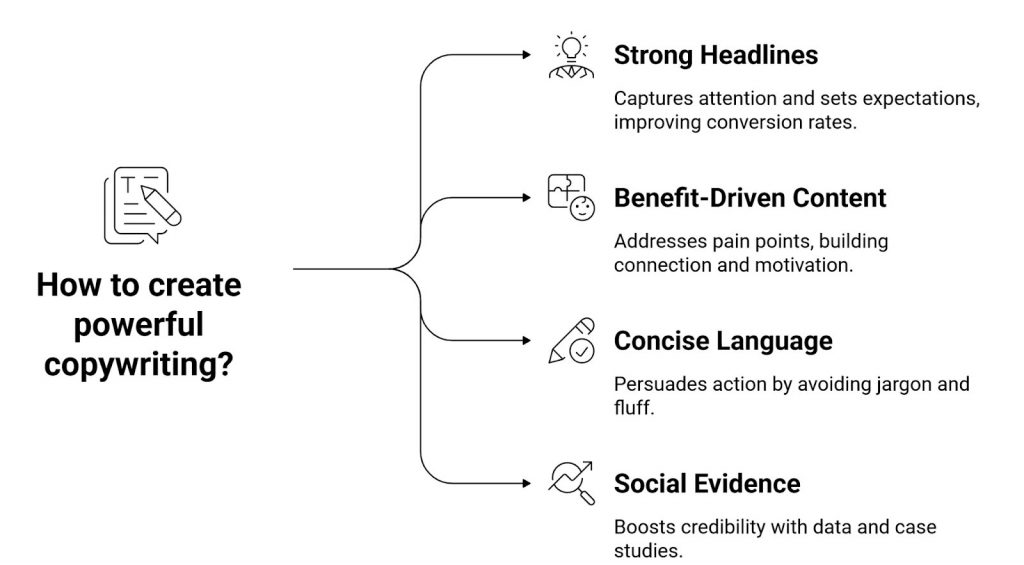
Tips for Powerful Copywriting:
- Strong Headlines: Your headline needs to capture attention instantly and convey the value of your offering. A compelling headline can significantly improve landing page conversion rate by setting the right expectations.
- Benefit-Driven Content: Focus on how your solution resolves specific challenges such as lead leakage and slow response times. Relating to the reader’s pain points builds a strong connection and motivates action.
- Concise and Persuasive Language: Avoid jargon and unnecessary fluff. Every sentence should work towards persuading the visitor to take the desired action.
- Social and Empirical Evidence: Support your claims with data or credible case studies. Referencing research or statistics not only boosts credibility but can also influence the highest converting landing pages in your niche.
For SaaS professionals, effective copywriting is more than just words on a page—it’s a strategic tool that contributes directly to your landing page conversion rate optimization efforts. Detailed landing page optimization examples abound in industry reports and case studies, offering real-world insights into how subtle copy changes can yield significant improvements. A finely crafted narrative is a cornerstone of converting interest into genuine leads.
8. Employ Continuous A/B Testing for Improving Conversion Rates on Landing Pages
Even the best-crafted landing pages require ongoing testing. Continuous A/B testing is paramount for identifying what works and what needs refinement. This iterative process drives long-term improvements in your landing page conversion rate and is fundamental to successful landing page conversion rate optimization.
Effective Testing Techniques:
- Test One Element at a Time: Whether it’s the color of a CTA button, the headline, or the image placement, isolating variables helps identify the impact of specific changes.
- Use Statistical Significance: Ensure your tests run long enough to produce statistically valid results. This avoids premature conclusions that might misguide your overall strategy.
- Monitor User Behavior: Combine A/B testing results with user data from analytics tools to understand the ‘why’ behind each outcome.
- Iterate Based on Insights: Once a winning variant is identified, implement the changes and continue testing new hypotheses. This cycle keeps your landing page conversion rate optimization strategies fresh and effective.
For teams dedicated to improving conversion rates on landing pages, continuous testing is the linchpin that turns data insights into practical, repeatable success. A systematic approach to A/B testing empowers you to create iterations that meet evolving user expectations and market dynamics. Embrace a culture of ongoing improvement to ensure your landing pages consistently perform at their best.
Conclusion
Achieving a superior landing page conversion rate is an ongoing journey that combines technical improvements, design refinement, and persuasive copy. In this article, we explored eight practical ways to break through the common obstacles faced by B2B SaaS marketers in their pursuit of landing page conversion rate optimization. From implementing a clear, singular CTA to employing continuous A/B testing, each strategy directly addresses user queries on how to improve landing page conversion rate and create some of the highest converting landing pages.
By focusing on simplicity, speed, mobile responsiveness, social proof, data-driven insights, audience-focused copy, and rigorous testing, your team can build landing pages that not only capture attention but also convert visitors into qualified leads. These strategies form the backbone of effective inbound performance and ensure that your marketing efforts are dynamically aligned with your business goals.
FAQs
Landing page conversion rate optimization is the systematic process of refining the design, copy, and technical elements of a landing page to boost conversions. It involves identifying visitor pain points and testing different elements to allow your page to capture leads effectively. This strategic approach has proven effective for SaaS marketers looking to streamline lead qualification and improve pipeline efficiency.
A clear, singular call to action focuses the visitor’s attention and minimizes confusion, guiding them to take the desired step. By using concise, action-oriented language, you help visitors understand what action to take, whether it’s signing up for a demo or requesting more information. This targeted approach is key to boosting conversion rates and achieving some of the highest converting landing pages.
Mobile optimization ensures that your landing pages are responsive and user-friendly across all devices, which is crucial since many visitors access sites via smartphones and tablets. A well-optimized mobile experience leads to faster load times and improved navigation, reducing bounce rates and enhancing conversions. For B2B SaaS marketers, addressing mobile usability is essential for capturing high-intent leads with minimal friction.
Data-driven decisions and A/B testing allow you to empirically identify which page elements are most effective at driving conversions. By tracking user behavior and testing variations in headlines, CTAs, and design, you can refine your strategies based on reliable performance data. This continuous optimization cycle is crucial for achieving sustainable improvements in your landing page conversion rate.
Social proof, including testimonials, case studies, and trust seals, builds credibility and reassures potential customers that your solution has value. It directly influences the visitor’s decision to engage, as positive experiences from others can significantly increase trust. Integrating social proof into your landing page is a proven method to improve conversion outcomes and convert more visitors into qualified leads.
Other blogs
The latest industry news, interviews, technologies, and resources.
RB2B Alternatives & Competitors
When your GTM team loses leads because buyer signals get scattered across disconnected tools, you're not just missing opportunities, ...

Unlocking Revenue Intelligence for Data-Driven Business Decisions
You're staring at your pipeline dashboard, and the numbers don't add up. Deals that looked promising last week suddenly ...

 Slow MQL to SQL? See how AI Agents accelerate your pipeline — live at INBOUND 2025.
Slow MQL to SQL? See how AI Agents accelerate your pipeline — live at INBOUND 2025.
